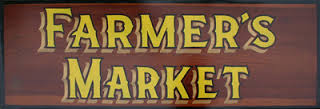Is it time to set up a farmers market in your community? (with related video)
Farmers markets are key connections between urban areas and agriculture. Their popularity has grown, mostly due to the increased consumer interest in obtaining fresh products directly from the farm. The U.S. Department of Agriculture (USDA) reported a 3.6 percent increase in the number of farmers markets as of Aug. 2013 compared to 2012 totals. There are 8,144 farmers markets listed in USDA’s National Farmers Market Directory.
“In New Jersey, we’ve gone from about a dozen farmers markets a dozen years ago to over 140 now,” says William Walker, who is an agricultural marketing specialist at the state of New Jersey’s Department of Agriculture. He says that mainly in the spring he gets inquiries from towns and organizations seeking to start markets.
“A community’s citizens, municipal officials, and local businesses have to want a market and be willing to support it financially and logistically,” says Walker. “In particular, local businesses have to see this market as a complement to their own businesses, not a competitor.”
A market can be a growth stimulator, says Walker. “Community farmers markets generate enough additional traffic to the downtown so that local businesses support the market.”
Grassroots research is key, adds Walker. “Not every town deserves to have a market as they have not included enough ‘community’ into their research to ensure a good market. Cooperative extension offices and agricultural agents can provide info to people and organizations looking to set up a farmers market, says Walker. “County agricultural agents know who the local farmers are and could give you help in reaching out to them,” he says.
Rutgers University’s Food Innovation Center has developed reports that can be helpful in organizing community farmers markets in the Garden State and beyond. Go here for details. The center has information for vendors seeking to understand the financial and time commitment they will be required to make, revenue estimates they might expect and what sort of products consumers are expecting to see at a market. “Managers of community farmers markets can glean information regarding the process of starting a market, vendor fees, market promotion, creation of bylaws, vendor management and more,” says Walker.
In Chicago, the Tribune reports a spike in farmers markets, with a total of 25 new markets opening in Chicago and its suburbs over the past year. Miriam Carey (photo at right), who owns the Farm Fresh Chicago quick reference guide and website, says farmers markets are all about variety. “Overall, Chicago is a food town, and people here embrace food that’s really good for you and food that’s really bad for you. The farm markets have it all, and have been smart about offering healthy choices along with Chicago’s beloved hot dogs, brats, and other cured meats.”
Government agencies can help ensure that people on public assistance can actually buy at farmers markets, says Carey. “The Number 1 thing that governments should be looking at: getting farmers markets that can accept SNAP into neighborhoods. That can be a win/win for farmers and residents.”
SNAP is the federal Supplemental Nutrition Assistance Program. The USDA’s Food and Nutrition Service has made it a priority to expand healthy food access through farmers markets to those participating in SNAP. Nationwide, a total of 4,000 farmers markets and direct marketing farmers are authorized to accept SNAP. Today, nearly 1 in 7 Americans rely on SNAP benefits.
Tips and advice on how to start a farmers market is provided in this video.
_____________
To get connected and stay up-to-date with similar content from American City & County:
Like us on Facebook
Follow us on Twitter
Watch us on Youtube




















